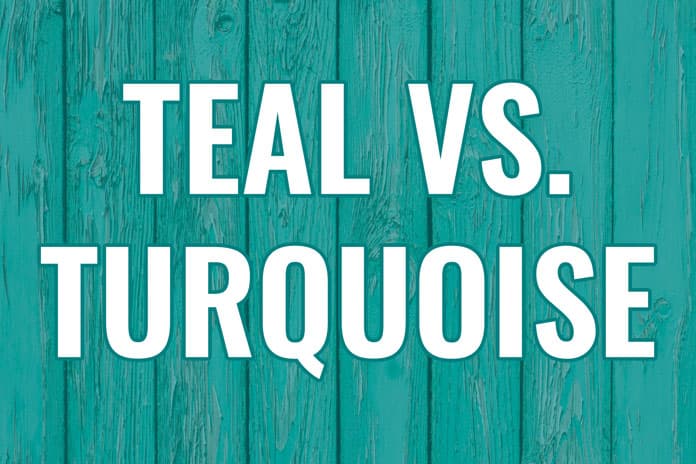
Understanding the difference between teal vs turquoise can be trickier than you might expect.
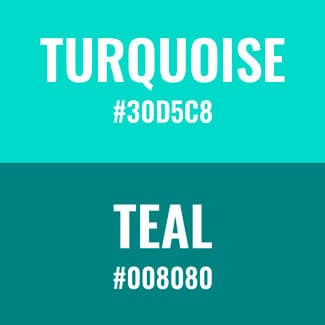
The two colors are very much in the same color family, and pretty close together on color charts.
Plus, it doesn’t help that most people don’t actually understand the distinctions between the two, and mistakenly use the two phrases interchangeably:
“Turquoise” is often used to describe teal, and vice versa.
Fortunately, understanding the differences between the two colors – and how to best use them for design and style purposes – is easy once you know the traits that distinguish each one.
In this post I’ll break down the key characteristics of both teal and turquoise to help you understand how and when to use each one.
Turquoise vs Teal
What’s the difference between teal and turquoise? Well…
Turquoise
Turquoise as a Color
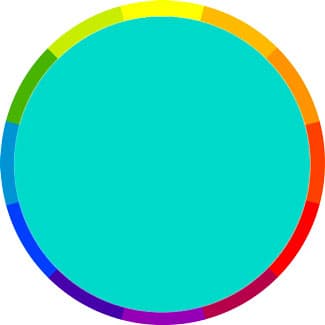
A shade of blue that falls somewhere in between blue and green, turquoise has characteristics associated with both.
It has both blue’s calmness, and green’s sense of growth, which is why many consider it to be one of the most beautiful colors for interior design.
(Particularly in the living room, where just a few accent pieces – like throw pillows or area rugs – in a medium turquoise color can brighten up the entire room.)
But turquoise also has a certain uplifting brightness and energy to it, which is typically found in brighter primary colors like yellow.
Turquoise in Nature
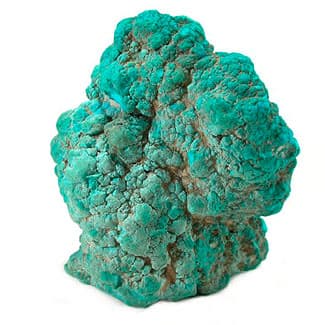
Turquoise the color comes from turquoise the chemical compound.
It’s actually a blue-to-green hydrous phosphate of copper, and has a unique hue that’s helped to make rare turquoise gemstones sought-after prizes for centuries.
Turquoise in Culture
Some cultures even consider light turquoise gemstones to be holy stones, believing that they bring good luck and good fortune.
They’re popular as jewellery and often worn as either around the neck as a necklace or around the wrist as a bracelet to help the wearer protect themselves from an unnatural or premature death.
Turquoise’s Meaning
Colors in the turquoise family also bear a resemblance to the color aquamarine (more on aqua below).
Both light and dark turquoise have always been connected to the ocean – both in nature and in terms of color.
Much like turquoise, the ocean can oscillate between blue’s calmness and green’s bounty.
Because turquoise balances the characteristics of blue, green and yellow simultaneously, it’s always been linked with balance, which helps explain its popularity:
Turquoise evokes a certain sense of emotional balance and serenity, which is similar to the feeling many people get from looking at the ocean.
The blue aspects of turquoise mean some people associate it with mental clarity, focus and intellect, rather than raw emotions.
Teal
Teal as a Color
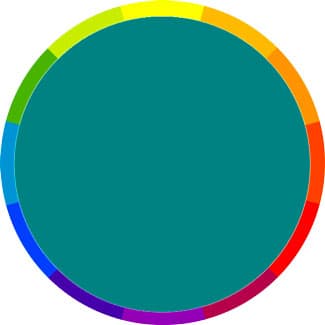
Like turquoise, teal is also a greenish-blue color.
But while turquoise is bright and has some of the same characteristics as yellow, the main difference with teal is that i’s closer to the medium/dark end of the spectrum, because it’s one of the deeper shades of bluish green.
The deep blue-green color of teal has a lower saturation, which makes it easier on human eyes.
Teal is a darker version of cyan, which many people know from the CMYK acronym –Cyan, Magenta, Yellow and Black – which are the four inks used in color printing.
(Black is the color that all other colors “key” to, so the K in CMYK actually stands for Key, but refers to black. I guess “CMYB” just doesn’t have the same ring to it?)
If you were mixing teal as a paint, you’d start with a white base and add pigments of blue and green to achieve the right shades of cyan.
When things started shifting to digital in the late 20th century, teal was included as one of the original 16 web colors defined by HTML, the popular coding language still used today.
Teal in Nature
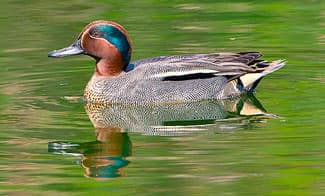
The name “teal” actually comes from an animal:
A teal is a freshwater duck commonly found in parts of Eurasia, which sports a stripe with what might today be described as a teal green hue.
People began commonly using the word “teal” to refer to the same (or at least a very similar) color at some point in the early 20th century.
Teal’s Meaning
Teal combines the stable tranquility of a royal blue with the optimism and nature that are inherent in green.
It’s the color most associated with rest, rejuvenation and peace of mind.
With its lower saturation, teal is a much calmer shade than turquoise, whose brightness gives it a certain energy.
Dark teal is understated, elegant and encourages calmness.
Teal in Culture
Teal attracts people who are reliable, independent and tend to do their own thinking and go their own way.
But while the may be independent, people who consider teal their favorite color are also thoughtful, and tend to be even keeled. For instance, teal is a popular color among meditators.
Teal can also attract those who are in their heads a little too much, and tend towards over-thinking or even pretension.
Wait – what about Aqua?
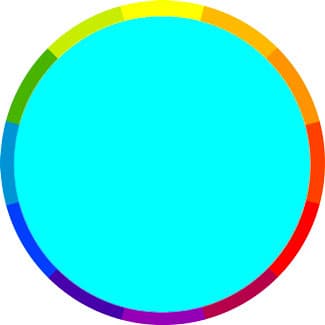
Aqua is essentially another name for cyan.
When colors and shades are translated from the real world onto the computer screen, they’re assigned what’s called a hex code – a six-character code that denotes a specific shade.
For instance, hex code for black is all zeroes – #000000 – whereas the hex code for white is all letters – #FFFFFF.
Both cyan and aqua have same hex code – #00FFFF – denoting the fact that they’re essentially the same color.
And in case you’re wondering, the hex triplet code of teal is #008080, while the hex code for Turquoise is #30D5C8.
Teal vs Turquoise vs Aqua
Aqua is lighter than both teal and turquoise.
As mentioned above, turquoise colors are basically darker versions of cyan, which means that they’re also darker versions of aqua.
Turquoise falls somewhere in between teal and aqua in terms of brightness. It doesn’t have quite the same bright, neon feel that aqua has, but it does have a bit of yellow mixed in, which it makes brighter and more vibrant than teal.
Complementary Colors for Teal, Turquoise and Aqua
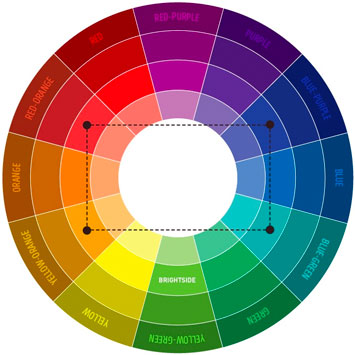
You can find any given color’s complementary colour by looking at a color wheel.
The colors that appear directly across from a given color on the wheel usually make for the best complementary colors.
Since teal, turquoise and aqua all fall within the green and blue family on the color wheel, their complementary colors all fall on the opposite side, in the orange/red family.
- Complementary color for Turquoise: corral or tangerine
- Complementary color for Teal: dark orange or maroon
- Complementary color for Aqua: bright orange
Complementary Clothing Colors
Since colors in the cyan family complement colors in the red and orange family, they can be the perfect choice for people with red or orange hair, who often tend to have elements of pink in their skin tones, which will be nicely complemented by the bluish green hues.
One word of advice, though:
When wearing colors in the blue/green family, stick to a dark teal blue, rather than really bright neon colors like aqua or even turquoise.
Those bright colors can often be too loud and risk washing you out, whereas a dark greenish-blue colour will provide a little more sophistication, and a better sense of balance with the lighter color of your skin and hair.
FAQ
Is teal the same as turquoise?
No. Both contain elements of blue and green, but teal is darker and has lower saturation, where turquoise is quite bright and even has elements of yellow.
Which is lighter, teal or turquoise?
Turquoise is definitely lighter than teal. As mentioned above, teal is a darker color with a lower saturation. Turquoise, on the other hand, is both a light and bright color.
Is teal green or turquoise?
Teal is neither green nor turquoise. It’s similar to turquoise in that it’s a combination of both green and blue, but it’s darker and has a lower saturation than turquoise. So it’s in the same color family as both green and turquoise, but it’s not the same.
Which is more blue, teal or turquoise?
Turquoise tends to be more blue than teal, which as mentioned above has a green base. But again, it depends on which shade or hue of each color you’re going for, as both colors combine blue and green.
Is teal close to acqua or turquoise?
Teal is arguably closer to aqua than turquoise, but it’s significantly darker and less saturated than both colors. Teal actually uses aqua, also known as cyan, as a base color, so it’s very much in the aqua family.
What is the difference between teal and turquoise and aqua?
Aqua is lighter than both teal and turquoise. Turquoise is basically a darker versions of aqua, while teal is even darker still, and also has more green.
More Advice on Style and Color from Irreverent Gent:
